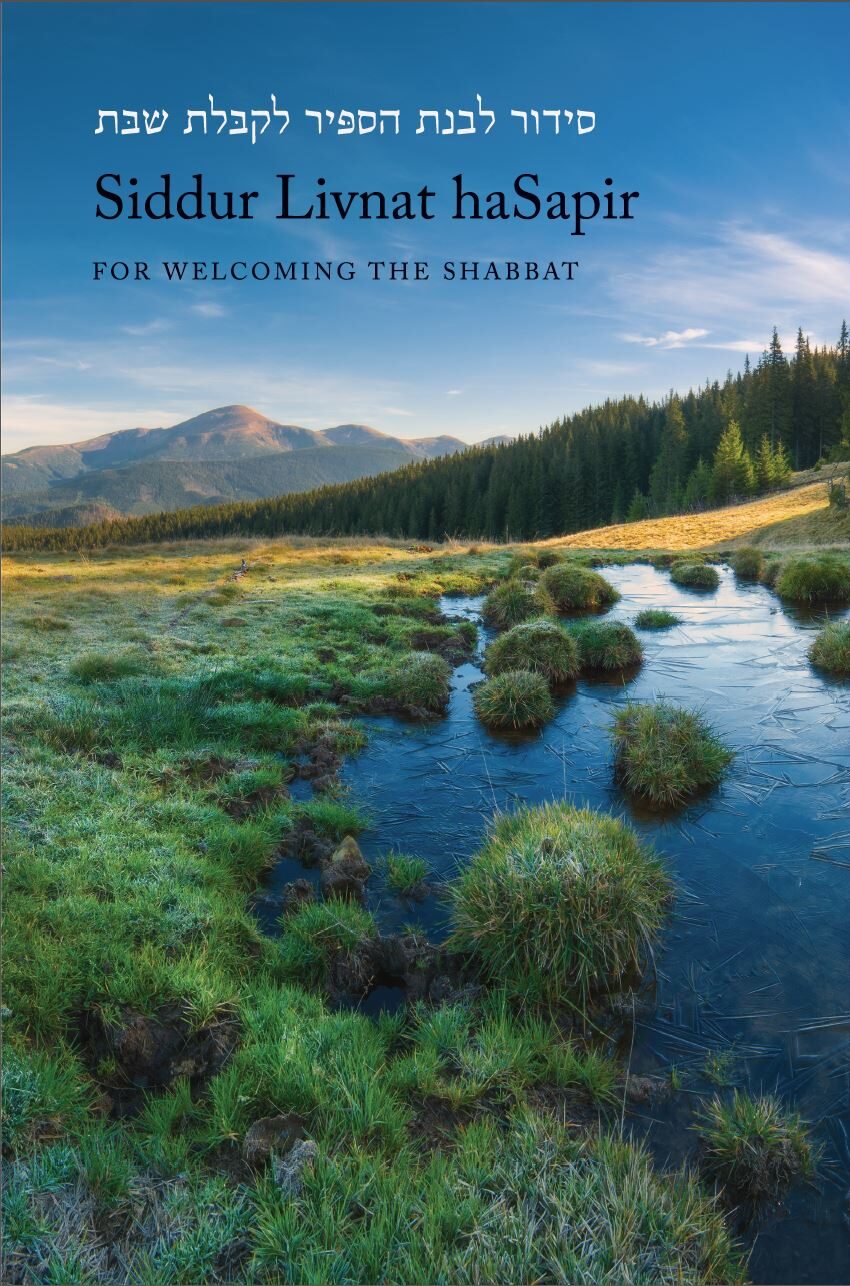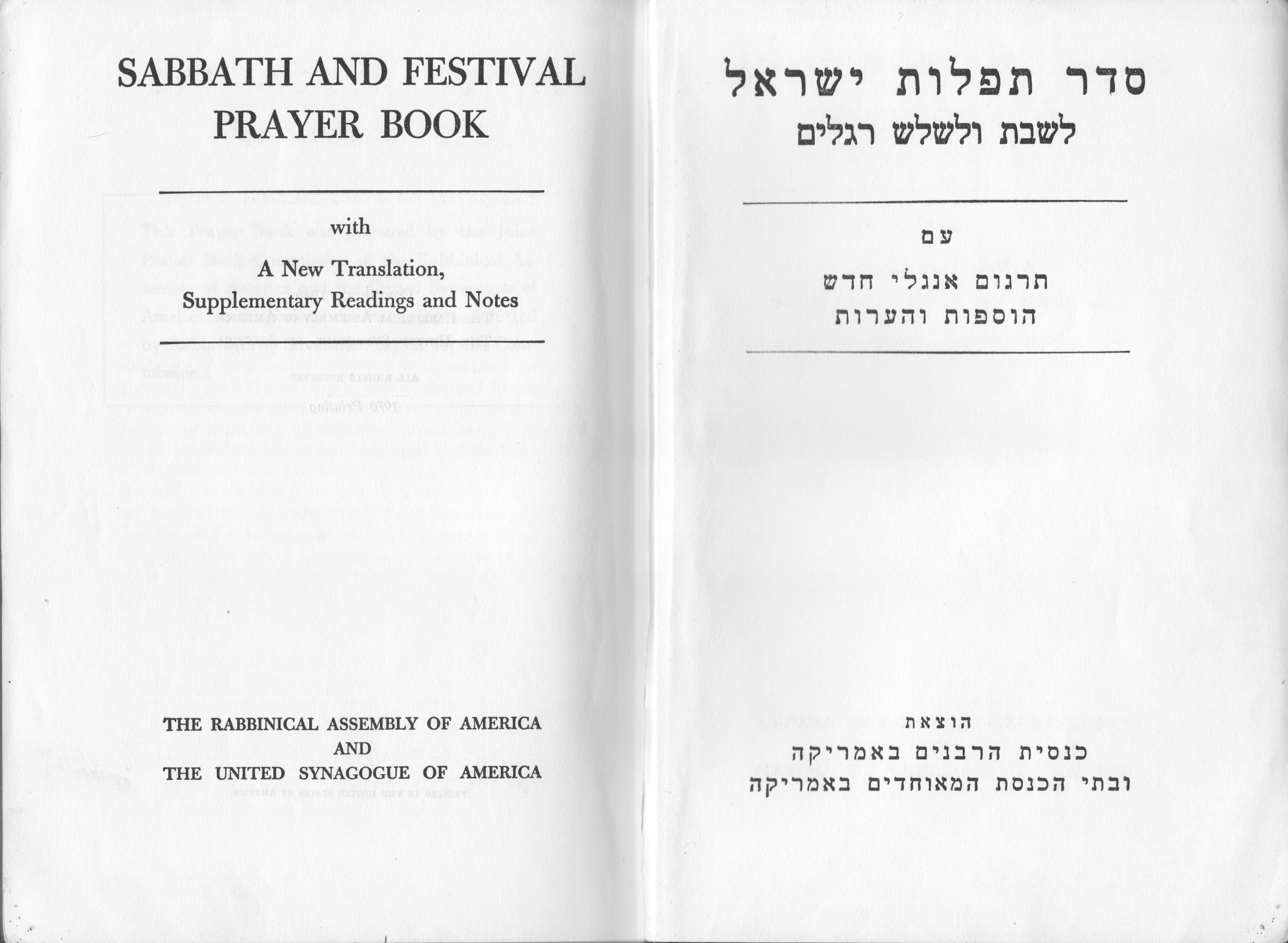תְּפִלּוֹת וּזְמִרוֹת לִכְבוֹד שַׁבָּת (Tefilot u’Zemirot liKhvod Shabbat) | Sabbath Eve Services and Hymns (1944) is a Friday night siddur compiled by Rabbi Sidney S. Guthman and Robert H. Segal, containing four unique services intended to further congregational participation. To this end, the prayerbook also contains extensive musical notation for liturgical melodies and hymns.
If the presentation of alternate Friday night services with a tradition of call and response prayer and hymn singing sounds like a classical Reform movement service, then that is what makes this siddur unusual, as Guthman was a Conservative movement rabbi. This prayerbook was probably intended as a means by which Conservative rabbis might re-introduce traditional liturgical arrangements into services structured in ways familiar to Reform synagogue attendees.

This work is in the Public Domain due to the lack of a copyright renewal by the copyright holder listed in the copyright notice (a condition required for works published in the United States between January 1st 1924 and January 1st 1964).
This digital edition was prepared by Aharon Varady for the Open Siddur Project from a copy held in the collection of the HUC-JIR Klau Library in Cincinnati, Ohio. (Thank you!) This work is cross-posted to the Internet Archive, as a repository for our transcription efforts.
PREFACE
Late Sabbath Eve Services have become part of American Jewish religious life. As a supplement to the traditional “Kabbolas Shabbos,” they are steadily gaining in popularity.
Much has been done to beautify these services. However, while great stress has been placed upon aesthetic improvement, little, as yet, has been done to encourage the worshipper to participate in the service.
We have long pondered this problem, and it is our conviction that greater interest can be stimulated if the services are arranged so as to permit fuller participation of the congregation.
We have therefore undertaken the task of arranging services which call for congregational singing and reading. With this end in view, we have included more prayers and psalms for responsive reading and selected traditional chants and hymns. These simple rhythms and sweet melodies will not only captivate the congregation but also stimulate their spiritual emotions.
We have included several services arranged in a manner conducive to congregational participation. We hope in this way to stimulate greater religious fervor and inspiration among the worshippers.
The translations, it must be noted, are based on the spirit rather than the literal meaning of the Hebrew context.
In the near future, we hope to publish our Sabbath morning and festival services following a similar arrangement.[1] I am not aware of this anticipated prayerbook ever having been published, alas. –Aharon Varady
In presenting this effort of ours to the American Jewish congregations, it is our earnest prayer that it will meet with favor in the “sight of God and man.”
Boston, May 1944.
The Editors
SUGGESTED METHOD OF PROCEDURE
The editors have found the following method to be the most practicable in bringing about congregational participation in these services.
Invite a group of congregants to meet during the week. Play the melodies included herein until the group is sufficiently familiar with them. During the service, seat these people amongst the congregation in various sections throughout the auditorium. When the reader reaches a point of response, these people who have been instructed in the singing of the melodies should act as leaders and sing out in full voice.
In a short time, the entire congregation will thus be able to participate in the singing of these services.
ACKNOWLEDGEMENTS
We make grateful acknowledgement to the following for their kind permission to use material included in this Prayer Book.
To Dr. Abraham W. Binder, for the hymn “Come O Sabbath Day”, and for his advice in the selection of other hymns.
To the Bloch Publishing Company, for several hymns reprinted here.
To Rabbi Israel Goldfarb, for the musical settings of “L’cho Dodi”, “Kiddush” and “Sholom Aleichem”, from “Friday Evening Melodies”.
To Dr. Solomon Solis—Cohen, for the translation of “L’cho Dodi”.
To Mrs. Menachem M. Eichler, for two prayers before the “ Kaddish” written by the late Rabbi Menachem M. Eichler.
To the United Synagogue of America, for the “Prayer for the Government”.
To Rabbi Solomon Goldman, for excerpts from “Prayers and Readings”.
To the Jewish Publication Society of America, for their kind cooperation.
To Rabbi Israel H. Levinthal, for excerpts from “Zemiroth V’Sishbochoth”, authored by himself and Rabbi Israel Goldfarb.
To Rabbi Morris Silverman, for excerpts from “Sabbath and Festival Services”.
We also wish to express our thanks to Rabbi Philip R. Alstat, Rabbi Abraham Burstein, Rabbi Louis M. Epstein, Chaplain Max A. Braude and Chaplain Bernard Segal for their help in the arrangement of these services.
To the Messers Mordecai Shore and Harry H. Fein, for their invaluable aid in the editing of the manuscript.
To the Misses Patricia B. Seidman and Edith Cohen for their assistance in the proof-reading of the manuscript.
To the Hebrew Publishing Company and its able staff, for their cooperation in all phases of this publication.
To Mr. Samuel Adelman, for the drawings of the Sabbath Eve Candles and the Kiddush Cup.
To Mr. Robert Rotfort, for his technical advice in the arrangement of the music.
To Mr. Jacob Unger, for his invaluable advice and careful work.
The editors of this Prayer Book also wish to acknowledge their heartfelt thanks to Mr. and Mrs. Abraham Krumbein, whose idealism and wise-hearted encouragement helped make possible this publication. To Mr. and Mrs. Robert Dreben and to the family of the late Frank Bernstein, for their sympathetic cooperation.
Notes
| 1 | I am not aware of this anticipated prayerbook ever having been published, alas. –Aharon Varady |
|---|

“📖 תְּפִלּוֹת וּזְמִרוֹת לִכְבוֹד שַׁבָּת | Sabbath Eve Services and Hymns, a Friday night prayerbook compiled and arranged by Rabbi Sidney Guthman and Robert Segal (1944)” is shared through the Open Siddur Project with a Creative Commons Attribution-ShareAlike 4.0 International copyleft license.









Leave a Reply